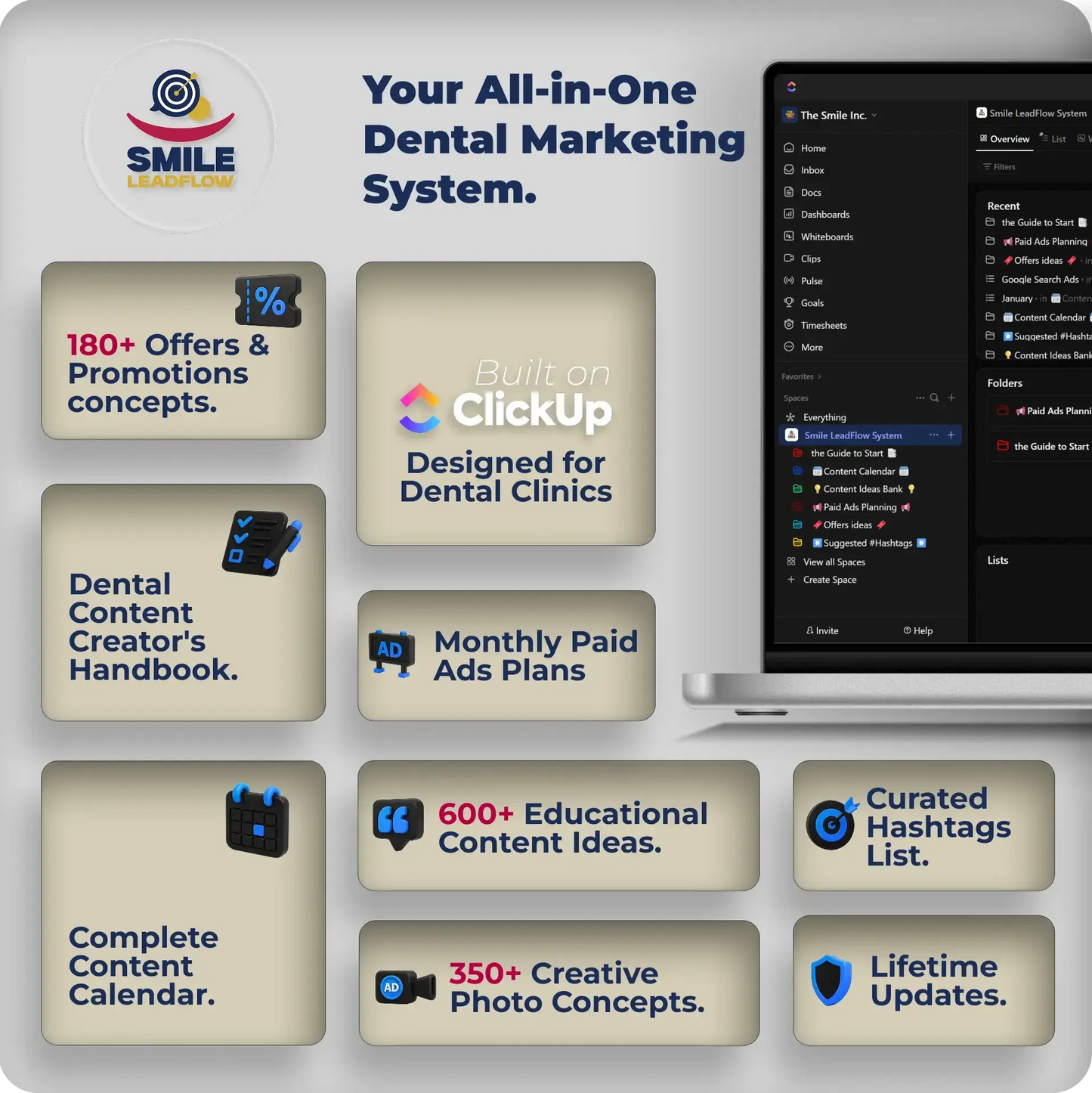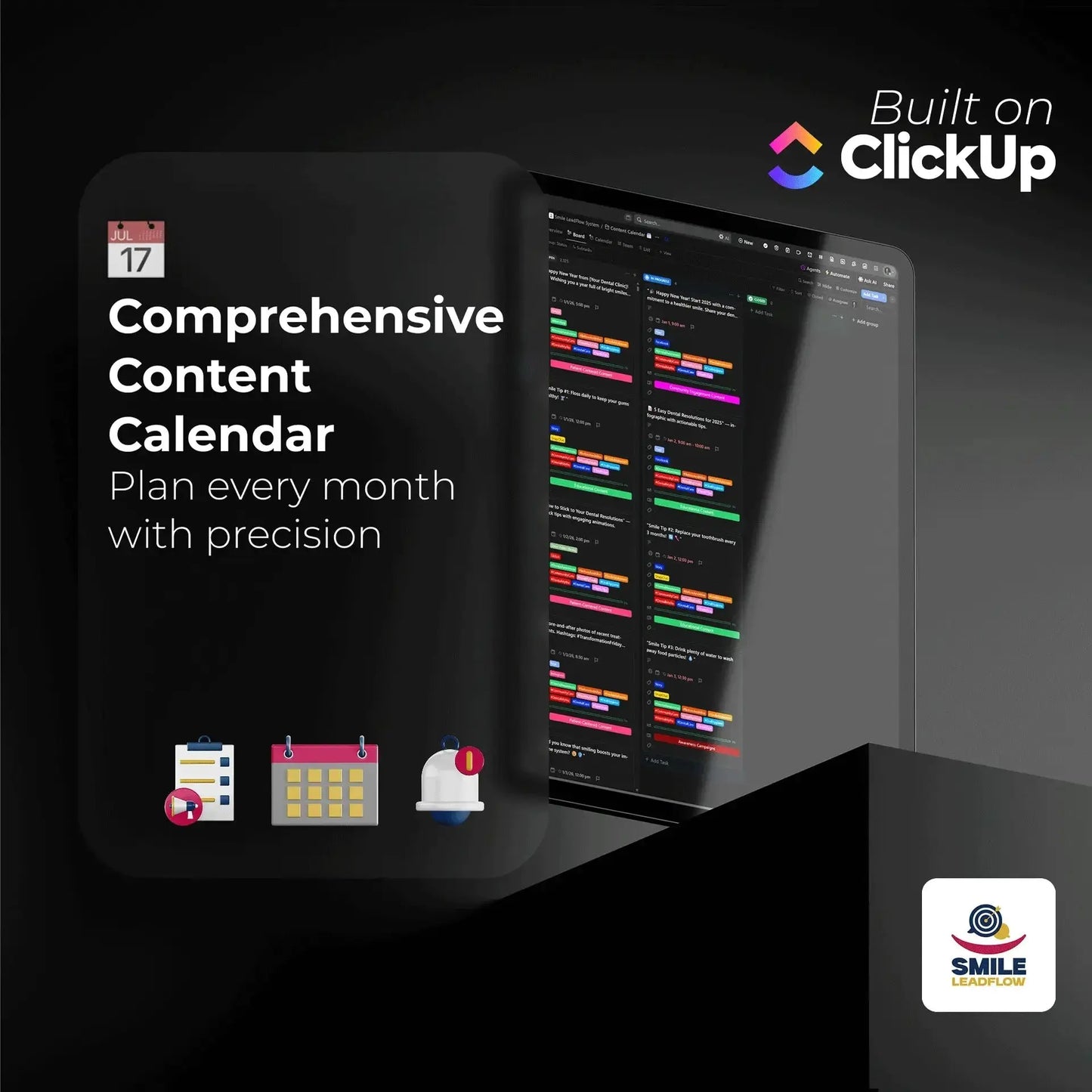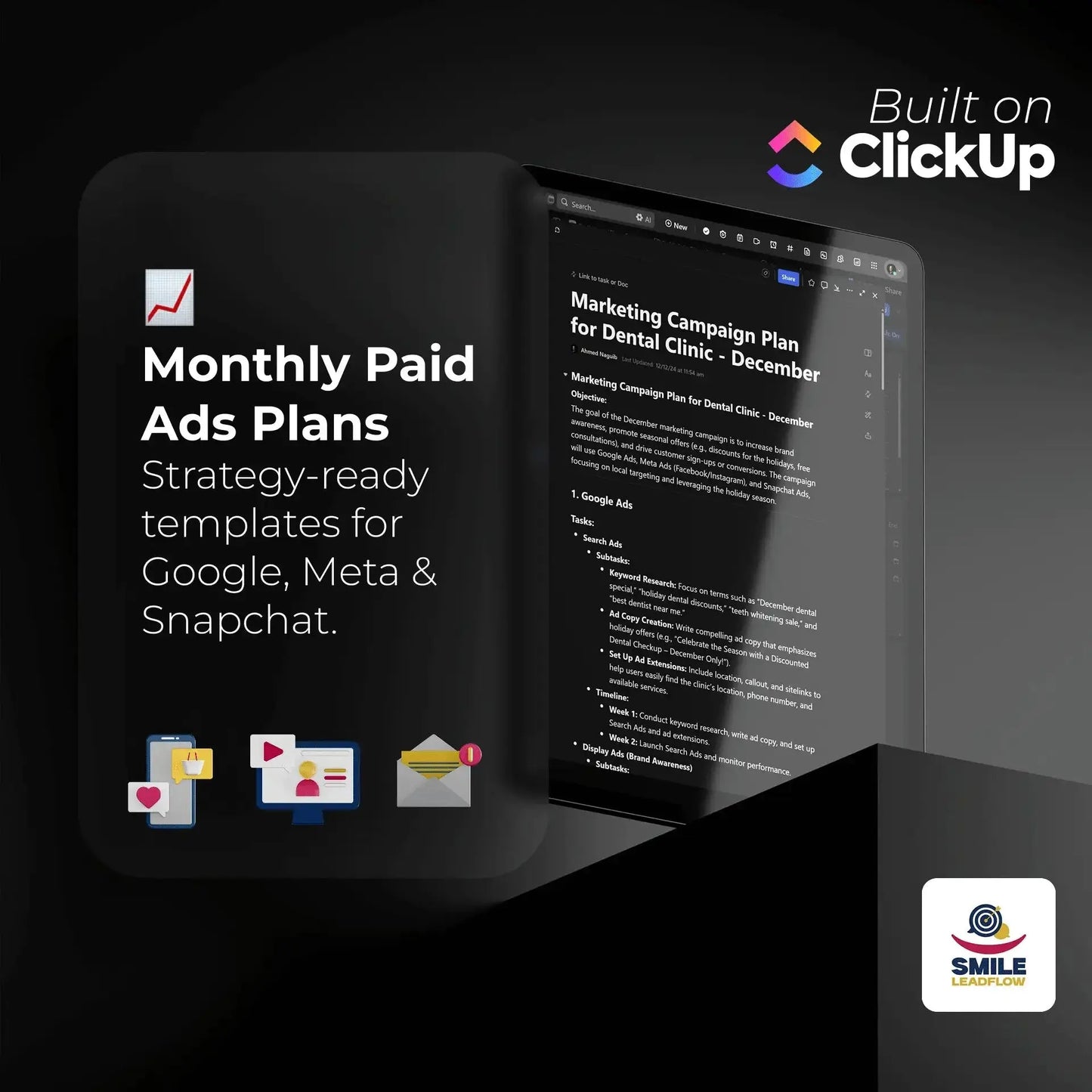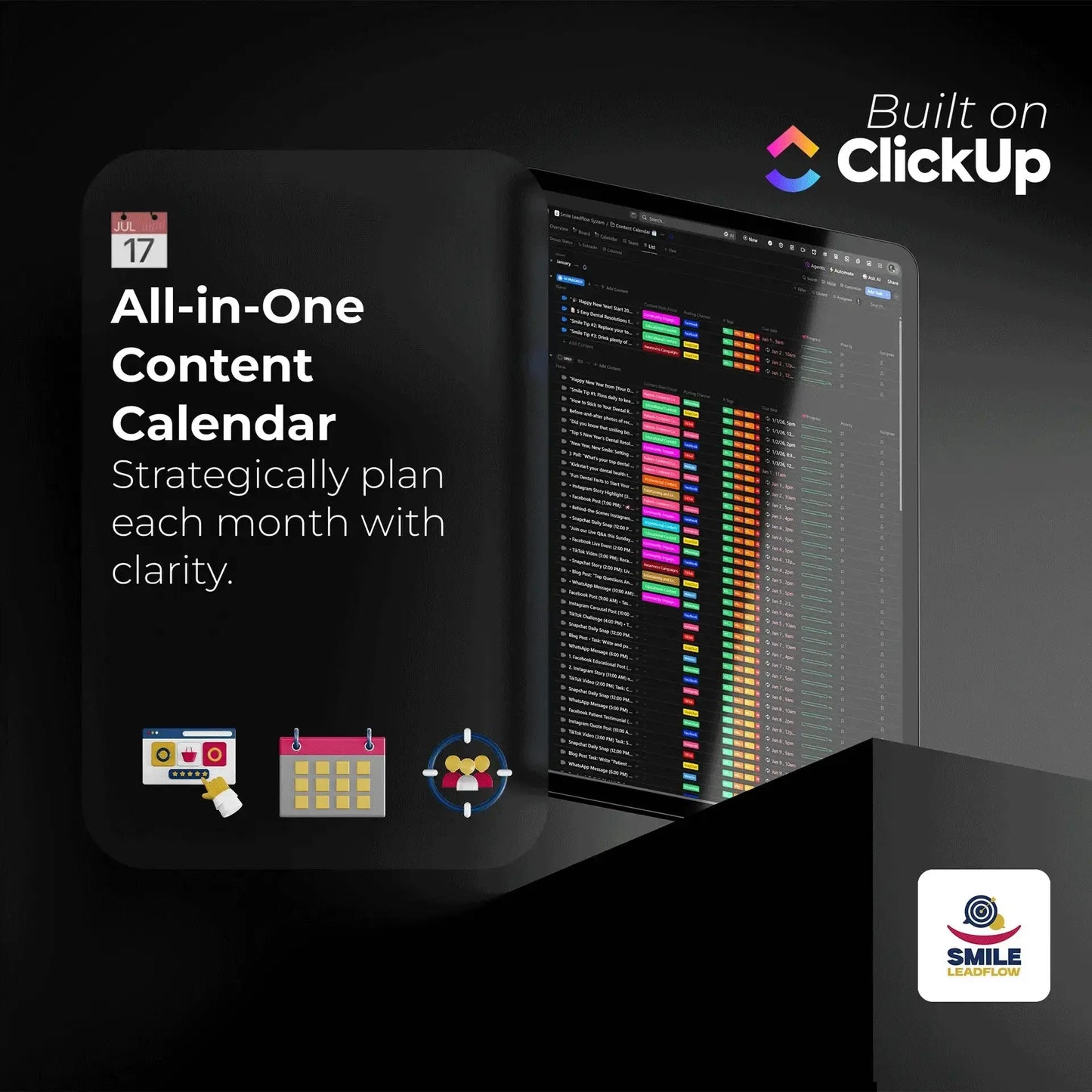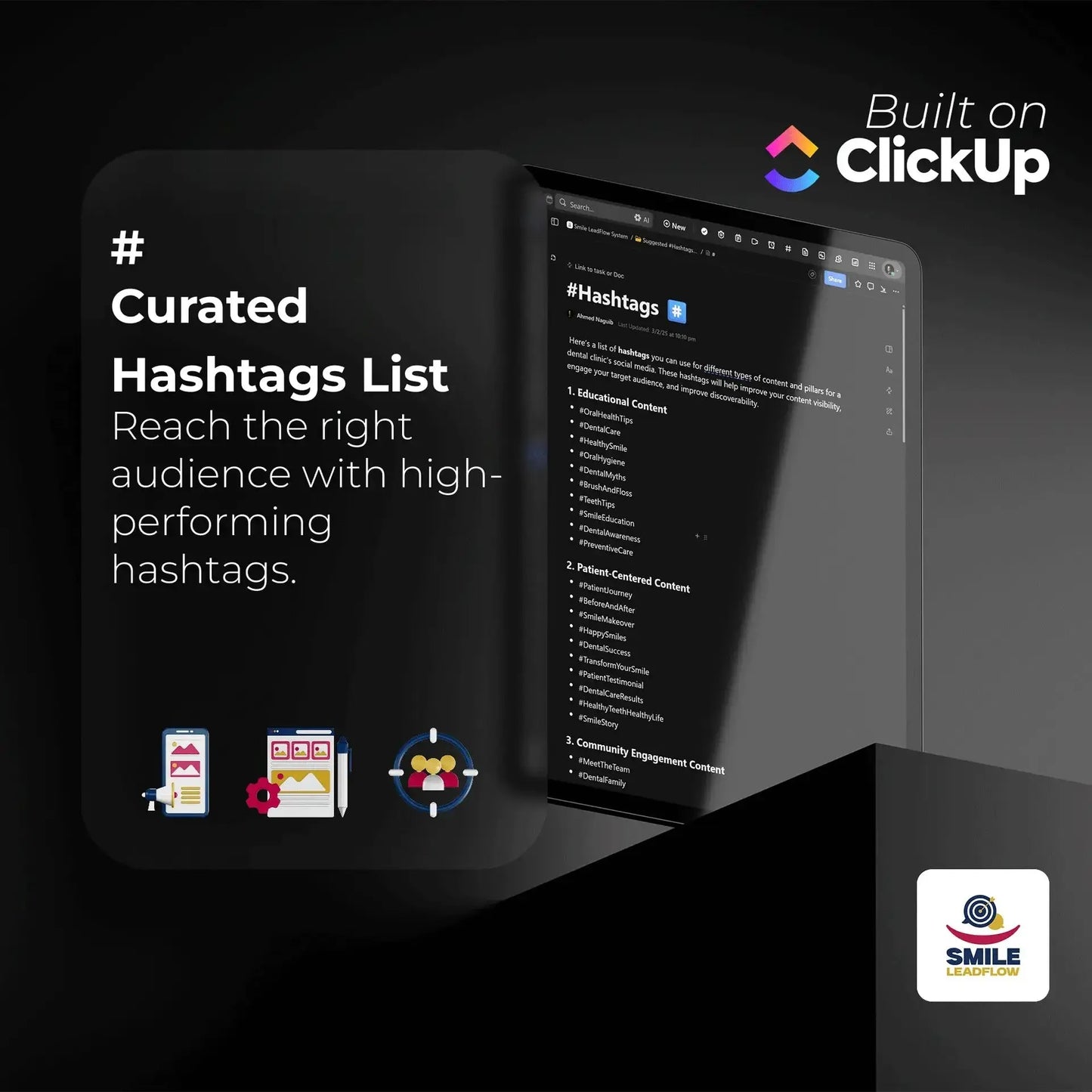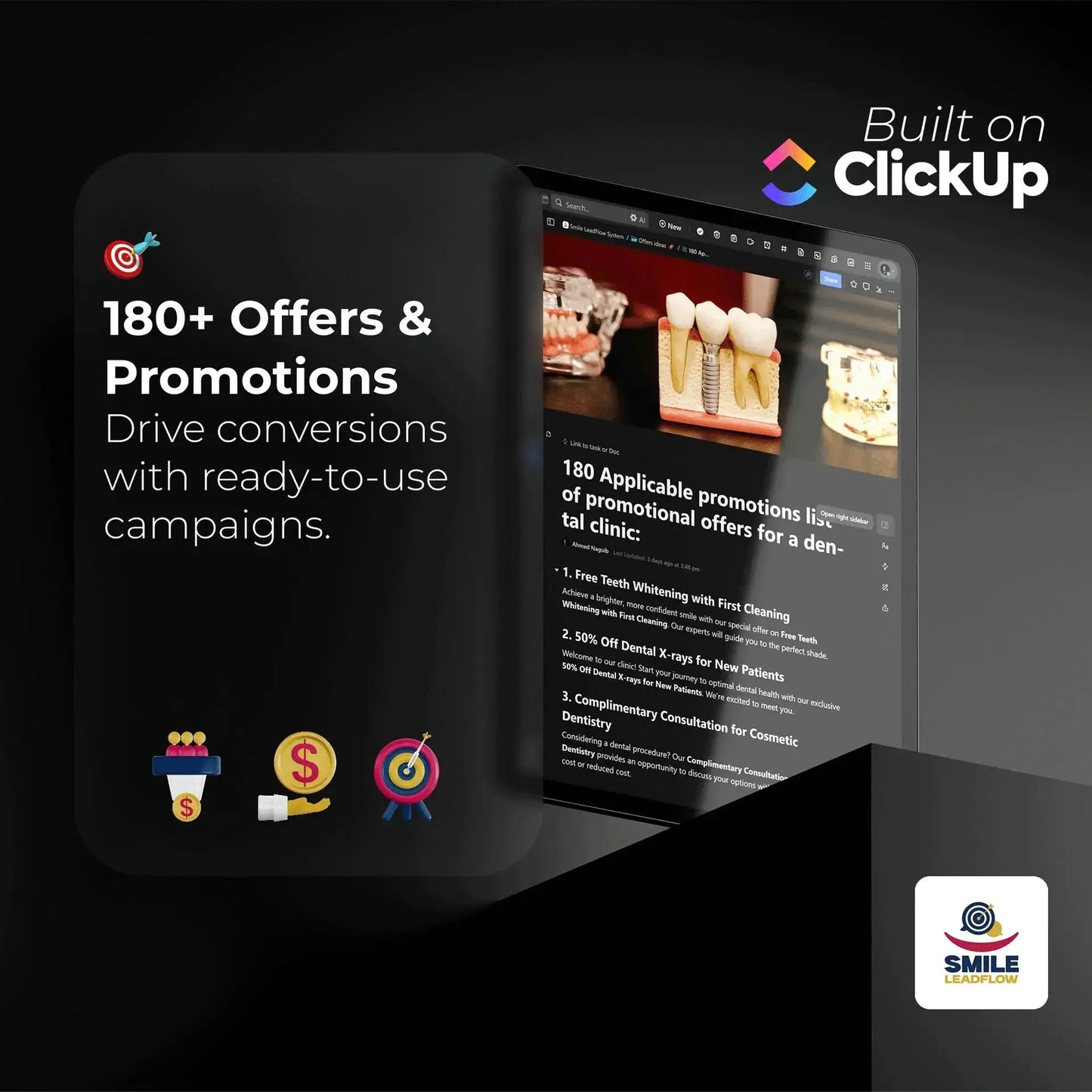
Stop Wasting Money on Dental Marketing: A Dentist’s Guide to Budgeting and ROI 🦷
Ahmed NaguibShare
As a dentist, you're a master of complex procedures, patient care, and the intricate science of oral health. But then there's the other side of your practice: the business. You’re not just a healthcare provider; you’re an entrepreneur. Juggling patient appointments with the constant pressure to get more dental patients can be overwhelming, especially when it comes to marketing.
You invest your hard-earned revenue into advertising with the hope of expanding your practice and attracting more patients. But how do you know if your money is actually working? Are your Facebook ads bringing in new smiles, or are your flyers ending up in the recycling bin?
If you feel like you're navigating the complexities of dental clinic marketing without a clear guide, you're not alone. This guide is designed for you. We'll explain how to effectively handle your advertising budget and evaluate your return on investment (ROI) in a clear and actionable manner.
First, Let’s Talk About the Money: Why Budgeting and ROI Matter
Before we dive into the "how," let's quickly cover the "what" and "why." These two concepts are the foundation of any successful plan for how to market your dental practice.
What is Advertising Budget Management?
Consider it as the strategic financial roadmap for your marketing efforts. It’s the process of deciding how much to spend, where to spend it (e.g., on Google Ads vs. local event sponsorships), and tracking every dollar to ensure it aligns with your clinic’s growth goals.
What is ROI (Return on Investment)?
ROI is the ultimate scorecard for your marketing. It’s a simple metric that tells you how much profit you made from a specific campaign compared to how much you spent on it. A positive ROI means your marketing is making you money. A negative ROI means it's time to change your strategy!
For a busy dental practice, mastering these concepts means you can stop wasting resources on ineffective campaigns and confidently invest in the strategies that actually fill your appointment book.
Your 4-Step Guide to Smart Dental Marketing & ROI

Ready to take control of your marketing spend? Here are four key strategies to help you plan your budget, choose the right channels, and measure what truly matters.
Step 1: Plan Your Dental Marketing Budget 💰
Effective planning starts with a clear view of your clinic's financial health.
- A. Assess Your Financial Health: Before you allocate a single dollar, review your clinic’s cash flow, profit margins, and overall revenue. A clear financial picture prevents you from overextending your practice while still investing enough to fuel growth.
- B. Set Clear Marketing Objectives: What do you want to achieve? Your goals will shape your budget. Common objectives include:
- Attracting new patients for specific high-value services (like implants or Invisalign).
- Promoting a new technology you've invested in, like a 3D scanner.
- Building your clinic’s brand awareness in your local community.
- C. Allocate Your Funds Wisely: There are two simple ways to set your budget:
- The 5-10% Rule: A common guideline is to dedicate 5-10% of your projected annual revenue to marketing (American Marketing Association, 2022). If your clinic projects $500,000 in revenue, your budget would be $25,000 to $50,000 for the year. This is a great starting point for dental marketing for beginners.
- Activity-Based Budgeting: Allocate funds to specific activities. For example, you might budget $5,000 for a six-month dentist SEO campaign and $2,000 to sponsor a local health fair.
Step 2: Choose Where to Promote Your Dental Clinic 📣
Once you have a budget, you need to decide where to spend it. Here are some top local dental marketing tips.
💻 Digital Advertising Channels
Digital platforms are fantastic because they are highly targeted and easily measurable.
- Google Ads & Dental Website SEO: When someone in your town searches "emergency dentist near me," you want to be the first name they see. Investing in Google Ads and dental website SEO puts your clinic directly in front of people actively looking for your services.
- Social Media Advertising: Platforms like Facebook and Instagram allow you to target users by location, age, interests, and even life events (like recently moving to your area).
- Google My Business (GMB): Optimizing your GMB profile is one of the most powerful and cost-effective ways to attract local patients. It’s the engine behind your visibility in Google Maps and local search results.
📰 Traditional Advertising Channels
While harder to track, traditional methods can still be effective for building local trust.
- Direct Mail & Print Ads: These can be great for reaching demographics that may be less active online or for promoting a special offer in a specific neighborhood.
- Local Sponsorships: Sponsoring a youth sports team or a community event can build incredible goodwill and keep your clinic top-of-mind.
Step 3: Measure Your Marketing ROI (The Right Way) 📈
This is where the results become clear. Monitoring your ROI reveals what's effective so you can replicate successful strategies.
Tracking Digital Campaigns
- Google Analytics: See how many website visitors from your ads end up booking an appointment online.
- Facebook Ads Manager: Get real-time data on how your social media ads are performing.
- Conversion Pixels: Place these tiny snippets of code on your "Thank You" page after an appointment is booked. They directly link a new patient to the specific ad they clicked.
Tracking Traditional Campaigns
- Unique Coupon Codes: Use a special code on your flyer (e.g., "SMILE25") to track how many people use it.
- Dedicated Phone Lines: Assign a unique phone number to a specific print ad to track calls.
- "How Did You Hear About Us?": Add this simple question to your new patient intake forms.
Calculating Your ROI
Once you have the data, use this simple formula:
ROI = (Cost of Advertising - Net Profit from Advertising) / Cost of Advertising × 1000
Let's make this real with an example. Imagine you spent $2,000 on a Google Ads campaign. That campaign brought in 20 new patients. You calculate that the average lifetime value (LTV) of a new patient is $1,000.
- Total Revenue: 20 patients x $1,000/patient = $20,000
- Net Profit: $20,000 (Revenue) - $2,000 (Cost) = $18,000
- ROI Calculation:
An ROI of 900% is outstanding! It tells you this campaign was a massive success.
Step 4: Optimize and Adjust for Maximum Impact ✅
Marketing requires ongoing attention and adjustments; it's not a one-time task. Consistent improvement is the cornerstone of achieving long-term success in marketing endeavors.
- Review and Adjust Regularly: Monitor your key performance indicators (KPIs). If a Facebook ad campaign has a low click-through rate, pause it and reallocate that budget to your high-performing Google Ads.
- Always Be Testing (A/B Testing): Test different ad headlines, images, and offers. Does a picture of your friendly staff perform better than a picture of your modern office? Testing is the only way to know for sure.
- Consider Seasonality: Boost your marketing efforts during important times, such as back-to-school season for family checkups or holidays for teeth whitening promotions.
Conclusion: Take Control of Your Clinic's Growth
Effectively managing your advertising budget and measuring ROI are the most important steps you can take to ensure your dental clinic marketing efforts lead to real, measurable growth. Transitioning from guesswork to a data-driven approach enables you to make informed decisions, optimize your marketing investments, and, most importantly, concentrate on your core strength: delivering healthy, happy smiles.
Your Action Plan for This Week
Don't just read this and file it away. Take one small step today to promote your dental clinic more effectively.
- Look at your marketing spend from last month.
- Choose one campaign (e.g., a print ad or your social media efforts).
- Use the steps above to calculate a rough ROI.
Are you satisfied with the outcome? Regardless of your response, this data point can assist you in making more informed decisions for the upcoming month. You've got this!
References:
- American Marketing Association. (2022). Marketing Budgeting for Small Businesses.
- Google. (2023). Google Ads Help.
- HubSpot. (2023). The Ultimate Guide to ROI for Marketing.












